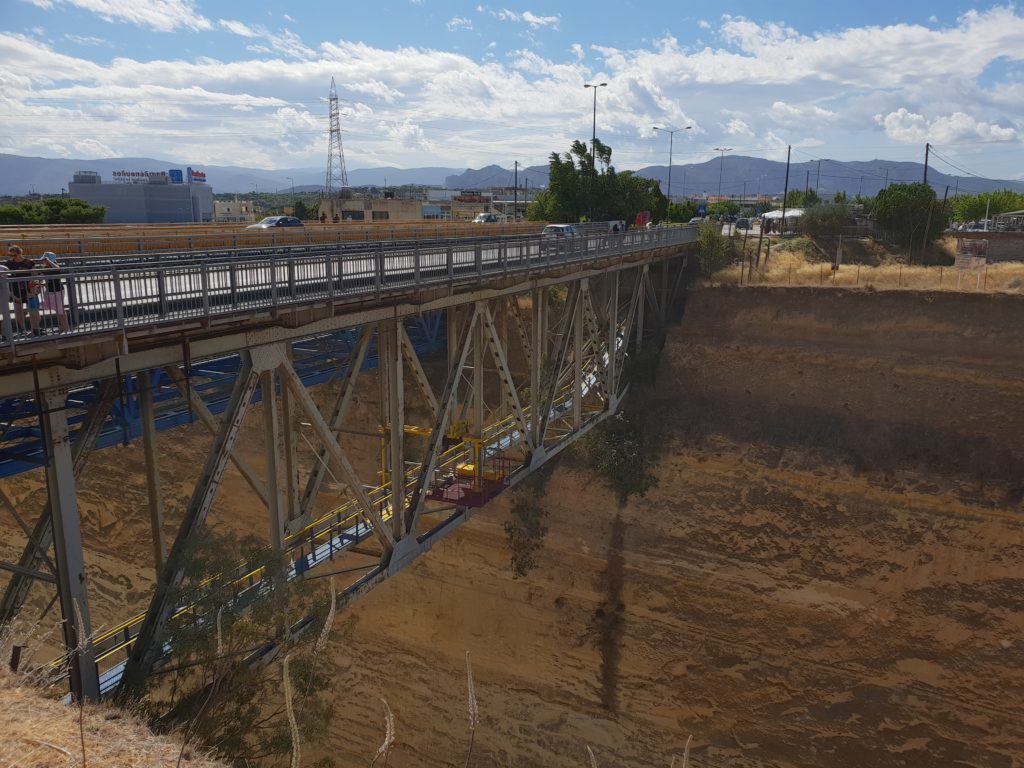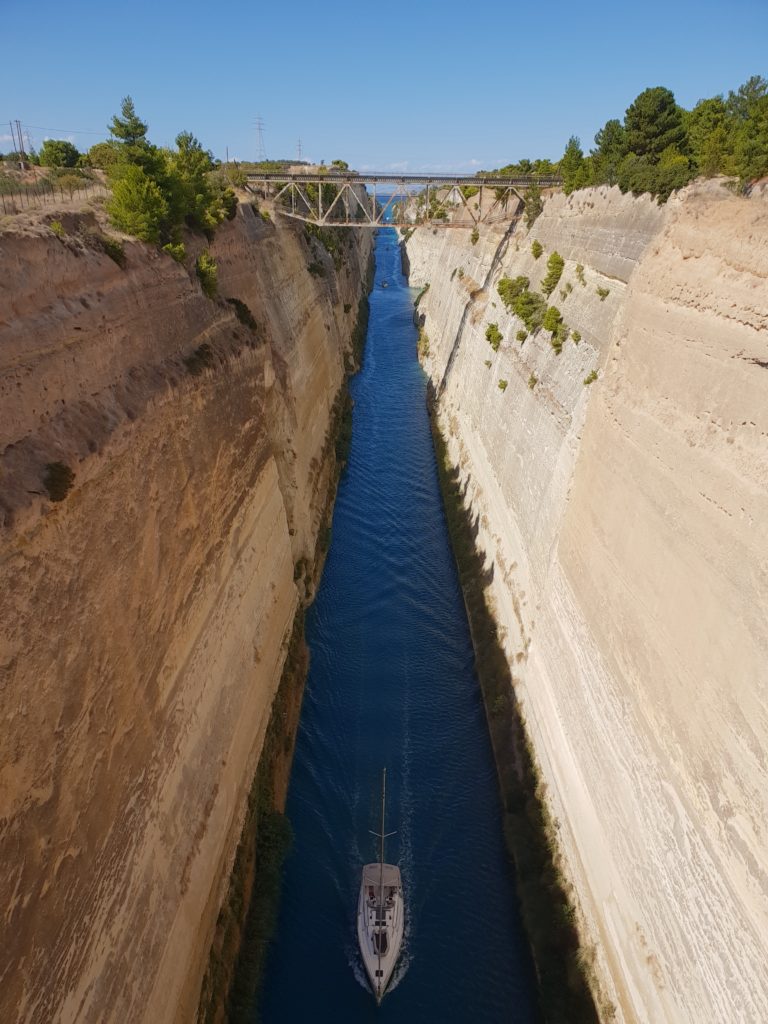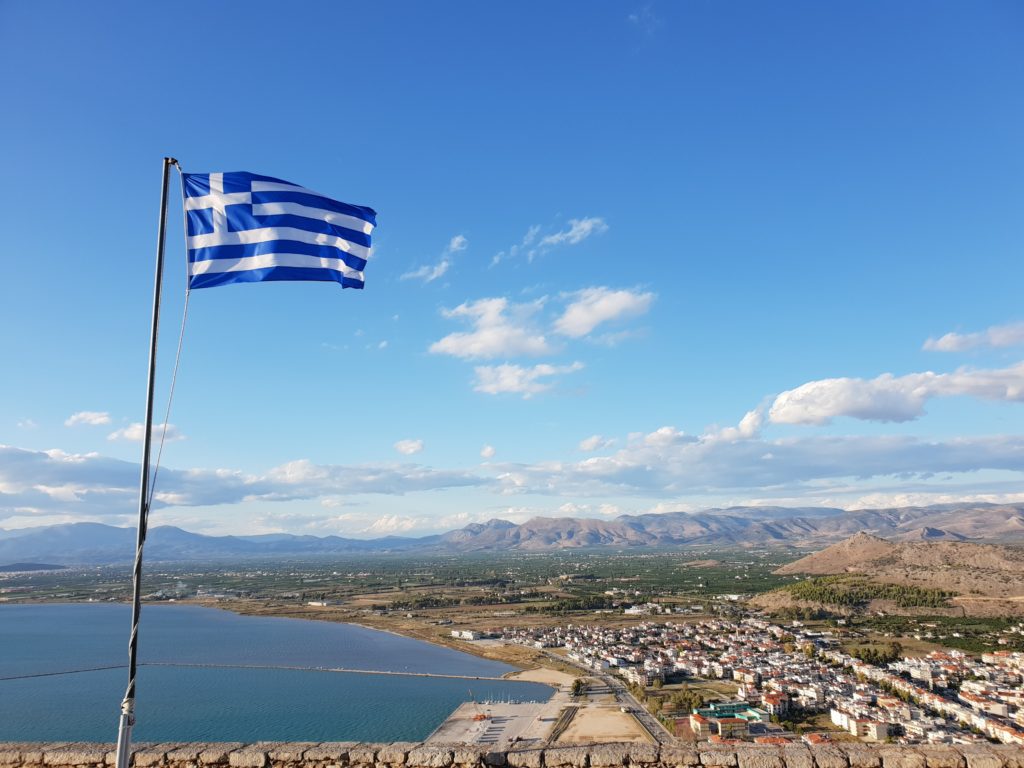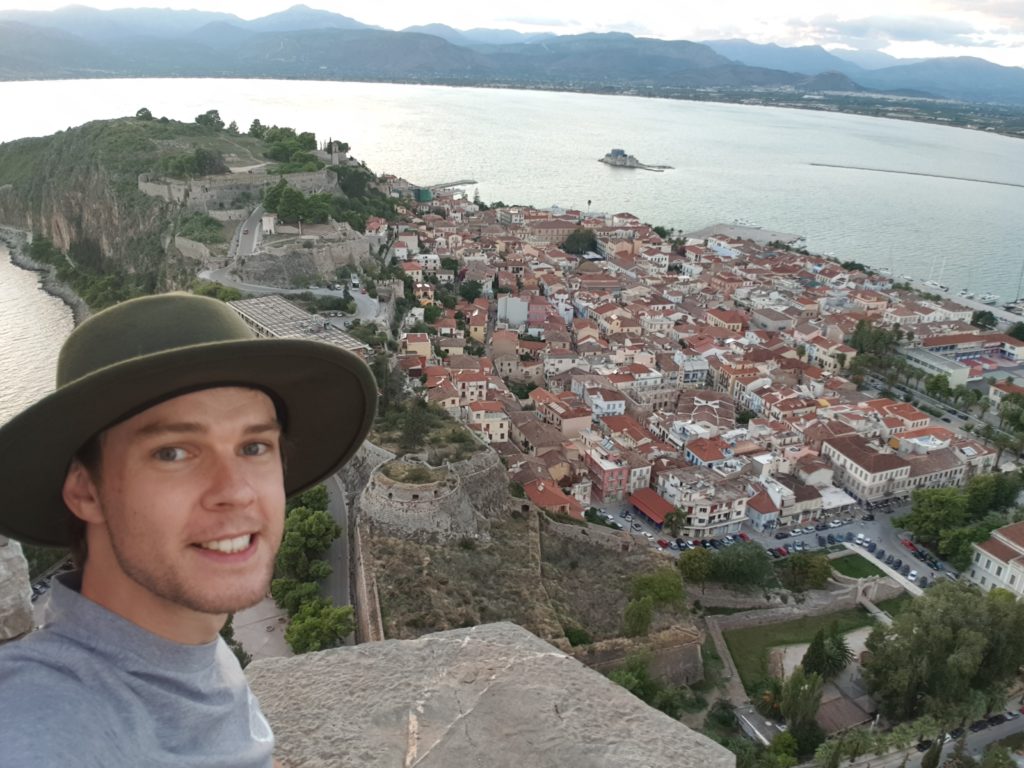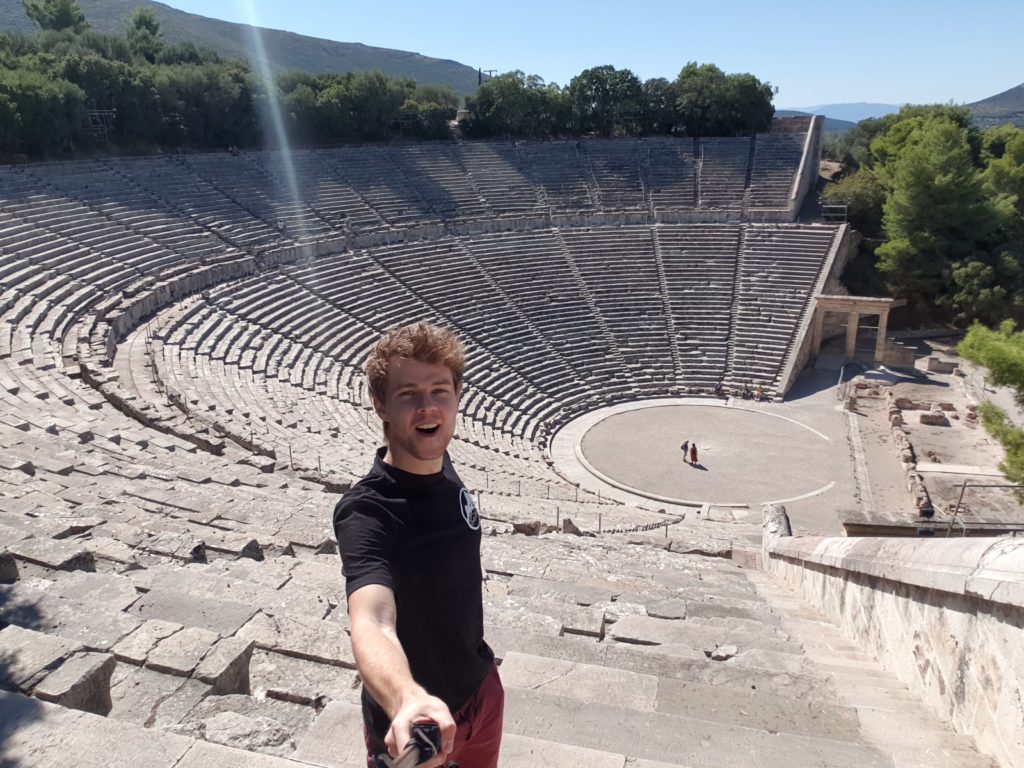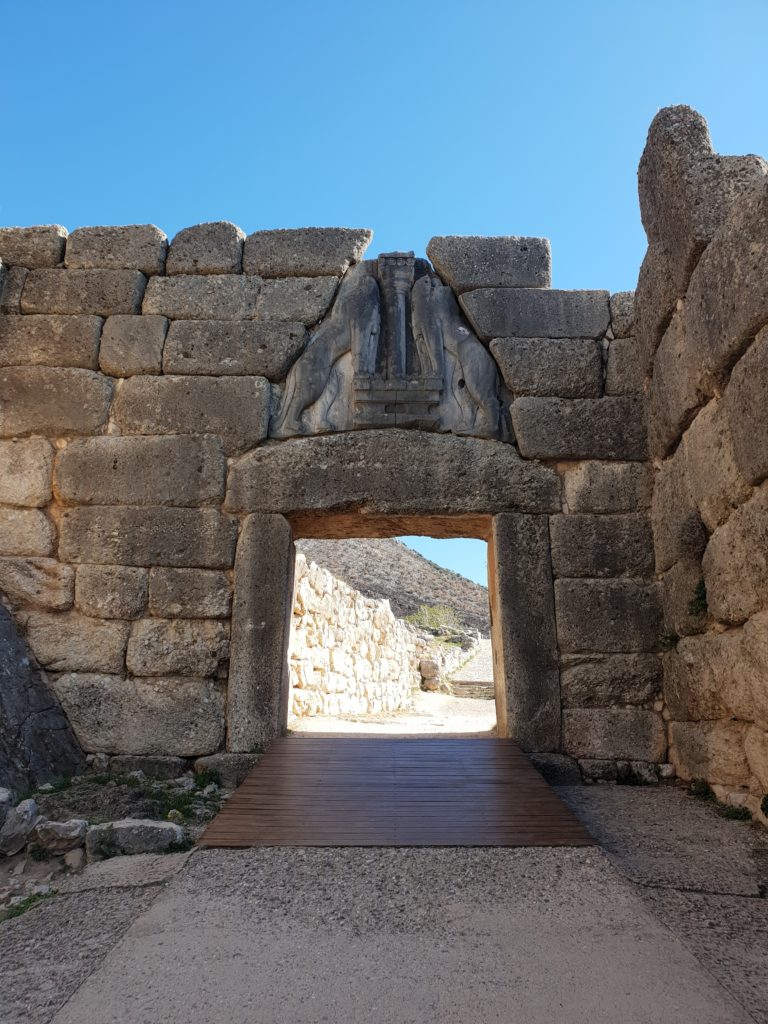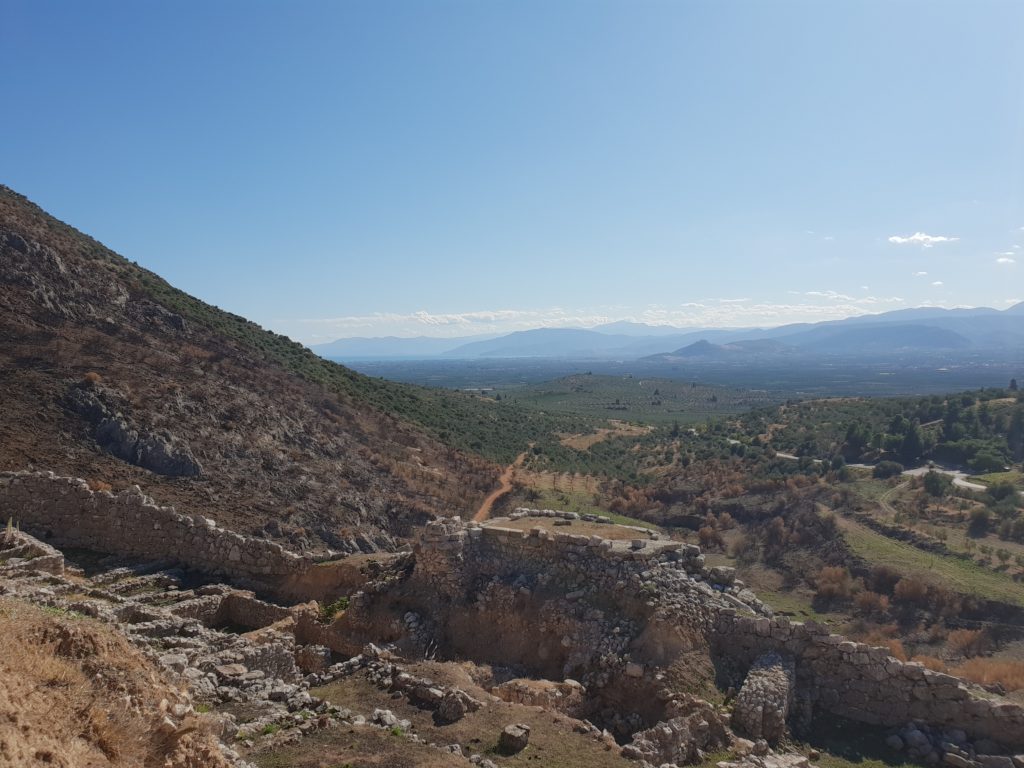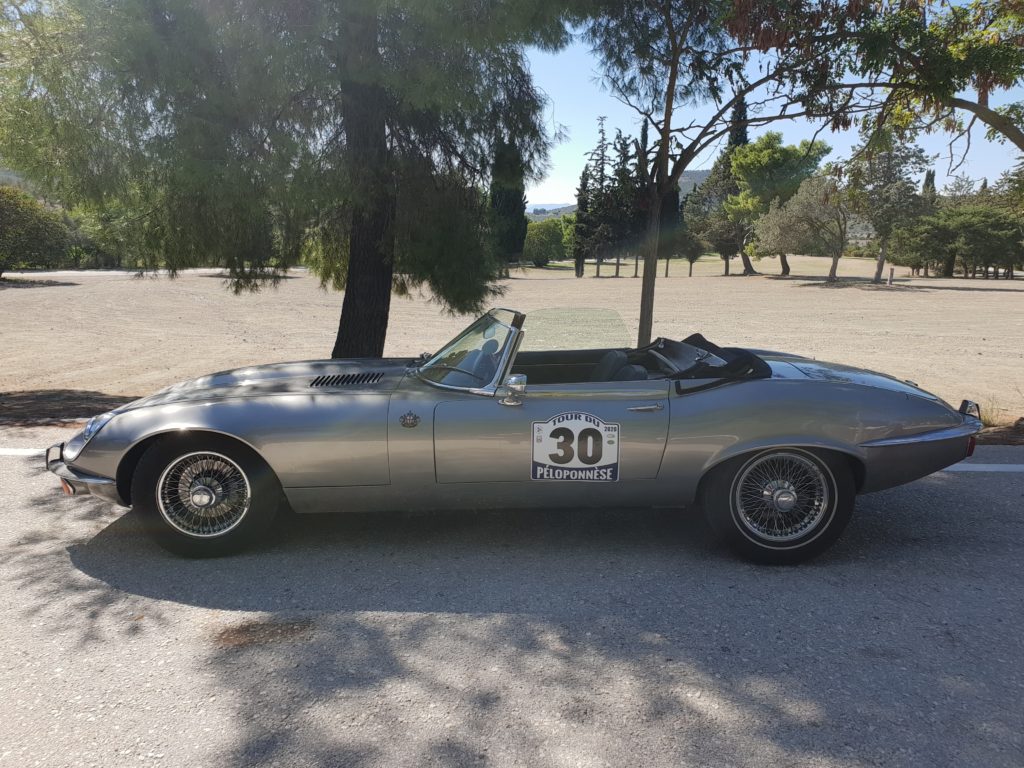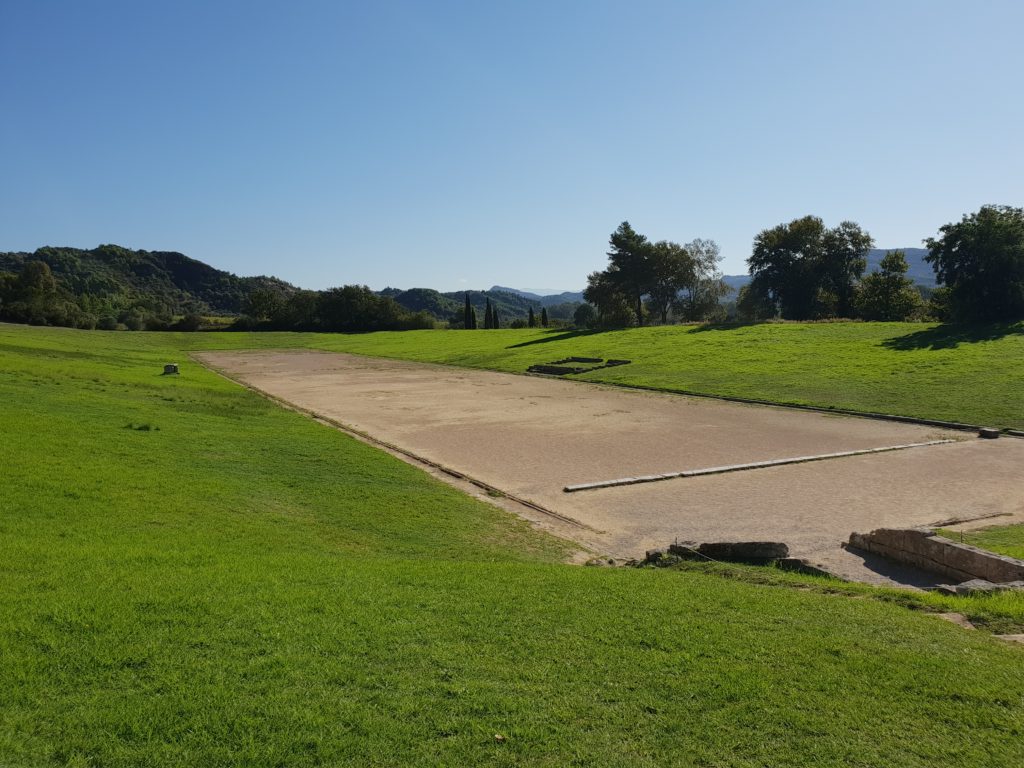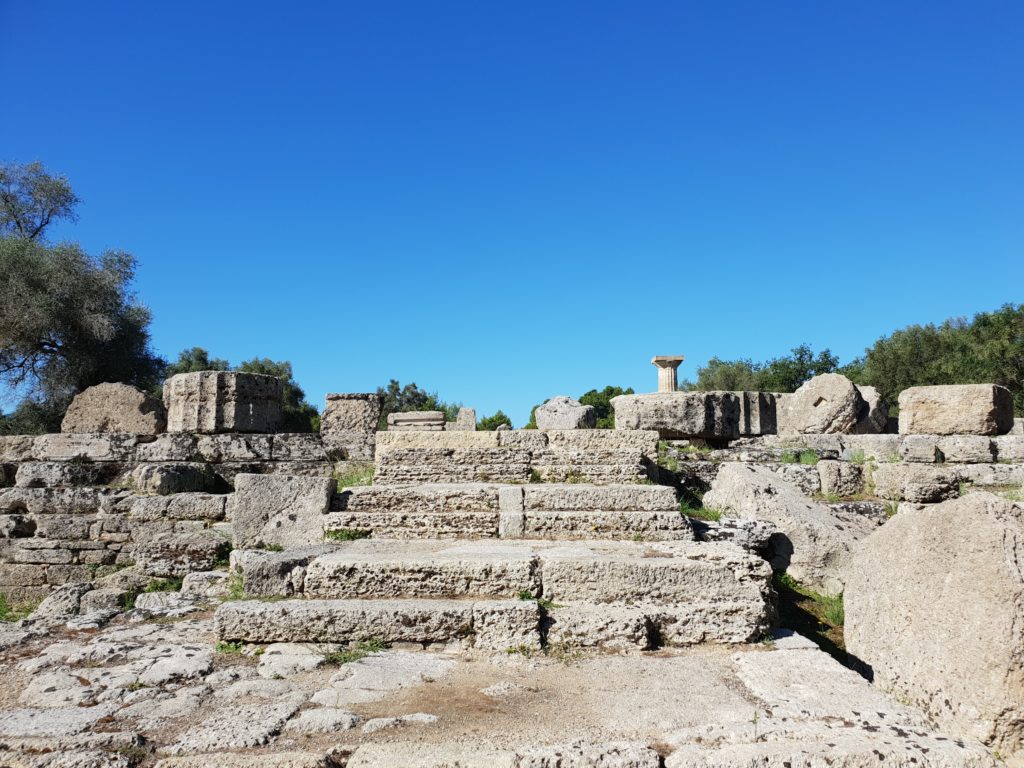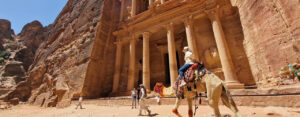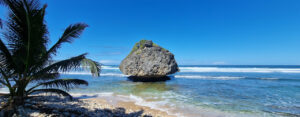
Playing Fast and Zeus
You re-join me in an overcast Athens and having been far too petrified to drive my enormous hire-car through the frenzied Greek capital, I was extremely grateful that I could finally abandon its narrow streets for the safety of wide, majestic highways for the first time. What was less majestic, however, was the volume of toll booths that punctuated the journey at ridiculously short intervals; each one denting my budget and increasing my chances of catching COVID from the mountain of loose change that kept being pressed in my tentative palms.
My planned route around Greece was shaped in a large loop, beginning by heading west out of Athens to the historic Peloponnese Peninsula before venturing as far north as one can go into the much less visited Greek mountains. The aforementioned peninsula is cut off from the rest of the country by the famed Corinth Canal, a six-and-a-half-kilometre man-made waterway built over a century ago that looks mightily impressive, although never really had a great deal of practical use (much like the world’s tallest filing cabinet in Burlington, Vermont). Built far too narrow and subject to periodic landslides, it is only sailboats and small tourist cruisers that navigate the isthmus nowadays, whilst bungee jumpers boldly dive into the abyss from the bridges high above. Today, I would be doing neither.
Instead, I was headed to the small coastal town of Nafplio, a spot with a far slower pace of life and a far greater chance of being run over by a mobility scooter. Despite its aging demographic, many of the town’s elders would regularly walk the nine hundred and ninety-nine steps up to the fort that overlooked the town, known as Palamidi, instead of riding the local bus. With only forty minutes until the site closed for the evening, I had to gallop up its fabled stairway and despite almost pulling a hammy and tripping headlong into a nearby cactus, I believe it was worth it.
Nafplio, as well as being a picturesque and interesting location in its own right, is a great place to base oneself for day-trips further afield, with my first excursion being the short drive to ancient Epidaurus. Once a small, thriving city-state, it prided itself on its limestone theatre which stands in a quite remarkable condition to this day. The Romans increased its capacity slightly, but it has remained almost untouched for the last two thousand years. As a result of the angle of seating, it is said that the acoustics are perfect and that anyone perched on the nosebleed rocks at the back can still hear the speaker or singer as if trapped in a lift with them, which is great unless you’re attending a Trump rally.
Just a short hop further on lies Mycenae, one of the major centres of the early Mycenaean civilization (1600 BC to 1100 BC). Widely regarded as the first organised civilization on mainland Europe, they built their largest city on an easily defensible hill with unobstructed views for miles around, making any potential invasion by wandering barbarians, or tourists, rather difficult. Being the only human at the site facilitated my ability to visualise what the city would have looked like over three thousand years ago, which was definitely required given how little of the buildings remain. An incredible piece of history, though.
That evening, I surpassed the unenviable milestone of having existed on this great earth for precisely 10,950 days – commonly rounded to thirty years. You would think that after that much worldly experience I would have known better than to mix cheap ouzo and warm orange juice – I did not. My poor decision came into sharper focus the following morn when I was required to check out of my hotel at 10 am and drive three hours across the Peloponnese Peninsula to my next destination. Frequent stops to expel various liquids from numerous orifices were required.
Next on Greek Ruins Top Trumps was Olympia, the location of the very first Olympic Games and where it was held for over a thousand subsequent years. As well as being able to visit the ‘stadium’ where all the action took place, the site also comprises one of the seven ancient wonders of the world: The Statue of Zeus. Destroyed by an earthquake many moons ago, as everything built at that time was, the only physical remains are the steps up to where the gargantuan gold and ivory statue once stood.
Once more, a large dose of imagination was required to envisage what the twelve-metre seated Zeus would have looked like; and, as I sat against a nearby tree stump, I did exactly that for about an hour. This was a real treat. It was no wonder that pilgrims would often weep in awe at a mere glance at it, as one does whenever Donald Trump wears a facemask. Despite my wonderment, the few other tourists who were at the site that day passed it without barely looking up from their cameras. And whilst I did not weep in awe, a small tear was shed when Google Maps told me I had five hours to drive to my next stop, as I abandoned the broiling south and began my journey deep into the misty mountains…
J
